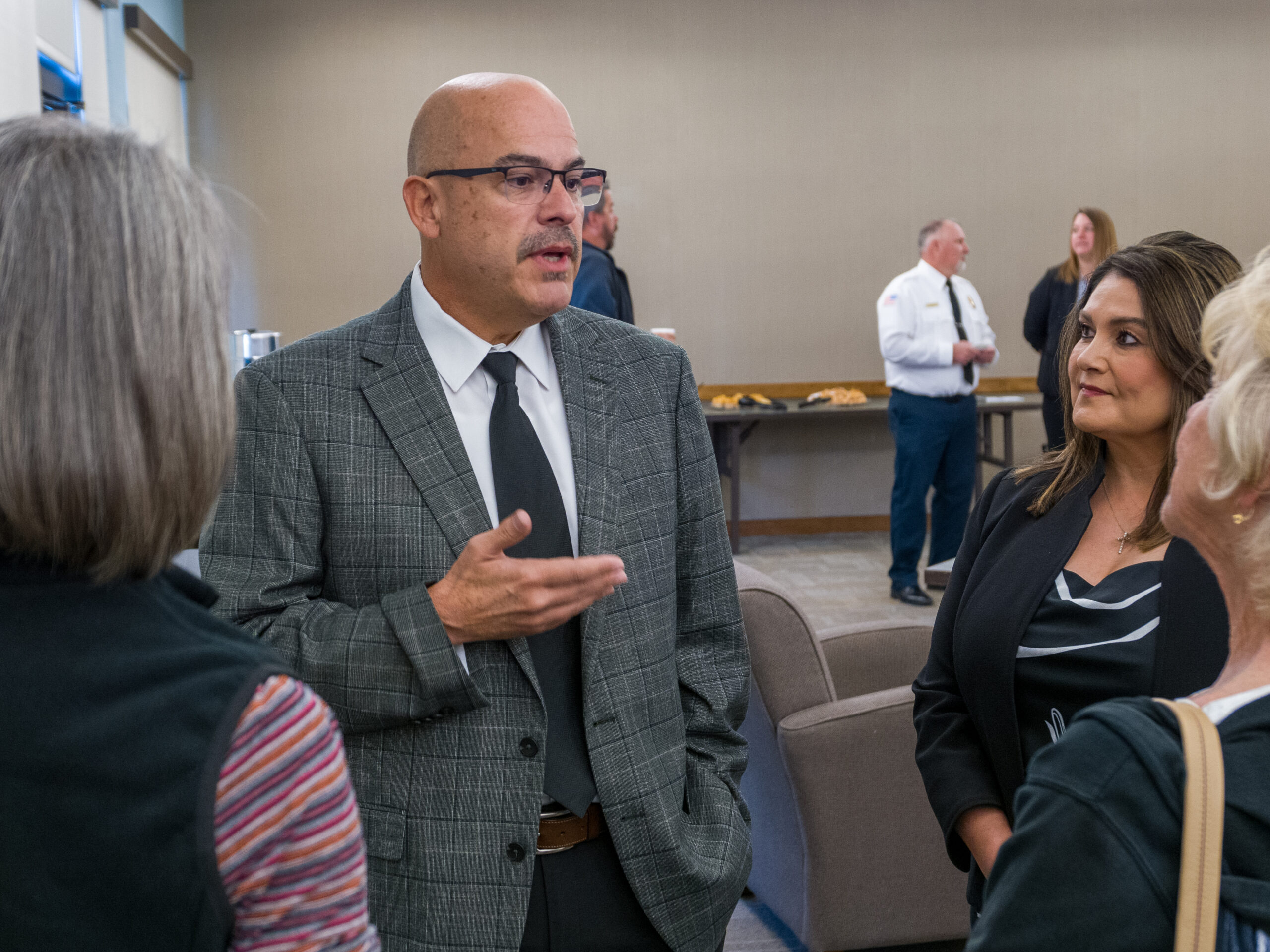Cottonwood parks, trails and Community Enrichment Coordinator Joe Sulfaro gave a presentation on the history of trails and the local trail systems at the Cottonwood Public Library on April 27.
Sulfaro observed that the very first trails were game trails created as animals followed the path of least resistance while foraging. Hunter-gatherers subsequently used these trails for their own purposes. As European settlers moved west, these trails saw increased use and were gradually widened to allow the passage of wagons and carts.
One of the most famous westward expeditions was that of Meriwether Lewis and William Clark, which was facilitated by President Thomas Jefferson after the Louisiana Purchase in 1803. Lewis and Clark followed the course of the Missouri River by boat, portaged across the Rockies and followed the Columbia River down to the Pacific near present-day Portland, Ore. Their historic trail can still be followed today, albeit mainly by water.
Trail creation was further spurred by the ideology of Manifest Destiny, the California Gold Rush of 1849 and the Homestead Act of 1862. The latter piece of legislation allowed settlers to claim 160 acres of land by paying a small administrative fee and living on the claim for five years. The Pacific Railway Act of 1862, which aimed to create a transcontinental railroad between the Pacific and Atlantic oceans, also contributed to trail development.
The most common routes that homesteaders used included the Oregon Trail, the Mormon Trail and the Santa Fe Trail, all of which have present-day recreational routes that can be hiked.
The first official trails in the U.S. were government-sanctioned trails constructed to allow access for firefighters and as connecting routes. It wasn’t until the 1930s that trails were created purely for their scenic value, mainly through the effort of the Civilian Conservation Corps as part of Franklin D. Roosevelt’s New Deal.
The National Trail System Act of 1968 created a nationwide standard for trails by establishing four categories of recreational, scenic, historic and connecting trails. Today, the National Trail System is responsible for over 50,000 miles of trails.
The earliest trails in the Verde Valley include the Palatkwapi Trail, now known as the Chavez Trail, which connected Winslow to Prescott via a 125-mile route. During the 1580s, Spanish explorers made contact with the Hopi of Northern Arizona while looking for mineral deposits, and the Hopi led them down a path to the Verde Valley that had been used for centuries.
Gen. George Crook, who needed a route for supplies from Prescott to Fort Apache, created what is now called the General Crook Trail. A 25-mile section of this trail can be hiked today near Prescott.
The most popular trail in Cottonwood is the Jail Trail, a 1.6-mile loop that showcases a rare desert riparian habitat. Cottonwood Parks and Recreation hosts a monthly Jail Trail interpretive hike on the first Friday of every month at 10 a.m. It is free and registration is not required. The hikes start from the Old Town trailhead and take 20-30 minutes, during which the guides discuss local history, ecology and hydrology.
Other trails in Cottonwood include the Cliff Rose Trail, a 1.3-mile loop, and the Blowout Wash Trail, a 1.1-mile out-and back trail. Future trail planning in Cottonwood includes plans to connect the Blowout Wash Trail to the Jail Trail via a 1.3-mile connection. This will link neighborhoods near the airport to Old Town. There are also plans to make a contiguous loop around Riverfront Park.



